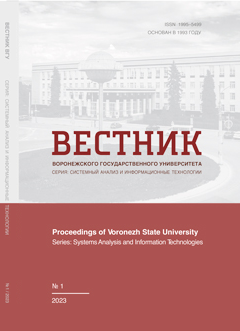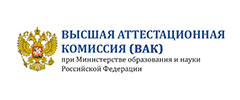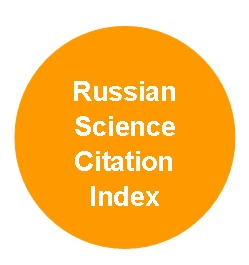Применение аппарата нечетких интервальнозначных чисел для оценки неопределенных параметров инвестиционных проектов и критериев их эффективности
Аннотация
Управление реальными инвестициями является важнейшим направлением деятельности современных предприятий. Реальные инвестиции, особенно связанные с созданием нового капитала (новых компаний, новых производств), сопряжены с различными видами неопределенности. При выборе объекта инвестирования необходимо учитывать факторы неопределенности, характеризующие: состояние конкурентной среды, возможность наступления неблагоприятных событий, стоимость инвестиционных ресурсов, случайные колебания спроса и рыночных цен, различные политические и экономические риски. Наличие факторов неопределенности приводит к тому, что параметры финансовых потоков инвестиционных проектов нельзя рассматривать как детерминированные, необходимы инструменты моделирования, которые позволяли бы учитывать неточность, расплывчатость, стохастический характер реализации проектов и получать оценки эффективности проектов, учитывающие основные, поддающиеся моделированию и/или экспертной оценке факторы риска и неопределенности. В данной статье для моделирования неопределенных параметров инвестиционного проекта и вычисления чистого дисконтированного денежного дохода предлагается использовать аппарат нечетких интервальнозначных чисел. Нечеткие интервальнозначные числа, которые достаточно часто интерпретируют как нечеткие числа второго типа (порядка) или сверхнечеткие числа, позволяют моделировать не только неопределенность значения на базовой оси (носитель) некоторого параметра, но и неопределенность, связанную со значением функции принадлежности. В работе предложен алгоритм построения нечетких треугольных интервальнозначных чисел на основе обработки экспертной информации и алгоритм формирования оценки чистого дисконтированного дохода проекта на основе операций с нечеткими интервальнозначными числами.
Скачивания
Литература
2. Raskatova M. I. (2013) risk assessment of investment projects with the help of fuzzy sets // Problems of Economics and Management, No 4 (20). P. 63–64.
3. Zaboev M. V. (2008) The use of hybrid systems, computational intelligence in assessing the effectiveness of real investment in the face of uncertainty and risk // Innovation. No 12. P. 123–128.
4. Bakhusova E. V. (2013) Fuzzy-set theory elements. Tolyatti: Tolyatti State University. P. 116.
5. Zenchuk A. I. & Shashkin A. I. (2008) Fuzzy model of investment project evaluation // Proceedings of VSU, series: Systems analysis and information technologies. (1). P. 117–123.
6. Konyukhov A. N., Du Bois A. B. & Safoshkin A. S. (2017) The foundations of the fuzzy set theory. Part 1 // Ryazan Radiotechnical University. P. 88.
7. Konysheva L. K. & Serova T. A. (2007) Fuzzy-set theory elements Ekaterinburg // Russian State Vocational pedagogical University State Educational Institution of Higher Professional Education. P. 129.
8. Poleschuk O. M. (2015) System analysis and processing of expert group information on the basis of linguistic variables // Herald of Moscow State University. Lesnoy Vestnik series. 1. P. 65–74.
9. Remezova Е. М (2013) Type-2 fuzzy sets: conception, analysis and peculiarities using // Modern Problems of Science and Education. Surgery. No 5. P. 13–22.
10. Shvedov A. S. (2019) On type-2 fuzzysetsandtype-2 fuzzy systems // Science and Technology Results. Modern Mathematics and its Applications. Subject Reviews (165). P. 114–122. DOI
11. Carlsson C., Fuller R. & Mezei J. (2011) Project Selection with Interval-Valued Fuzzy Numbers //Twelfth IEEE International Symposium on Computational Intelligence and Informatics. Budapest. P. 23–26. DOI
12. Carlsson C., Fuller R. & Mezei J. (2012) On Mean Value and Variance of Interval-Valued Fuzzy Numbers. International Conference on Information Processing and Management of Uncertainty in Knowledge-Based Systems // Springer-Verlag Berlin Heidelberg. P. 19–28. DOI
13. Hong D. H., Lee S. (2002) Some algebraic properties and a distance measure for interval-valued fuzzy numbers // Information Sciences: an International Journal. 148 (1). P. 1–10.
DOI
14. Mendel J. M. (2002) Type-2 Fuzzy Sets Made Simple // IEEE Transactions on fuzzy systems. April 2002. Vol. 10, No 2. P. 117–127. DOI
15. Mohagheghi V., Mousavi S. M. Vahdani B. (2016) A new multi-objective optimization approach for sustainable project portfolio selection:a real-world application under interval-valued
fuzzy environment // Iran Journal of Fuzzy Systems. (13). P. 41-68. DOI
16. Zadeh L. A. (1975) The Concept of linguistic variable and its application to approximate reasoning // Inform. Sci. Vol. 8. P. 199–249.
17. Ucal-Sari I. & Kahraman C. (2015) Interval Type-2 Fuzzy Capital Budgeting // International Journal of Fuzzy Systems. P. 635–646. DOI
- Авторы сохраняют за собой авторские права и предоставляют журналу право первой публикации работы, которая по истечении 6 месяцев после публикации автоматически лицензируется на условиях Creative Commons Attribution License , которая позволяет другим распространять данную работу с обязательным сохранением ссылок на авторов оригинальной работы и оригинальную публикацию в этом журнале.
- Авторы имеют право размещать их работу в сети Интернет (например в институтском хранилище или персональном сайте) до и во время процесса рассмотрения ее данным журналом, так как это может привести к продуктивному обсуждению и большему количеству ссылок на данную работу (См. The Effect of Open Access).



















